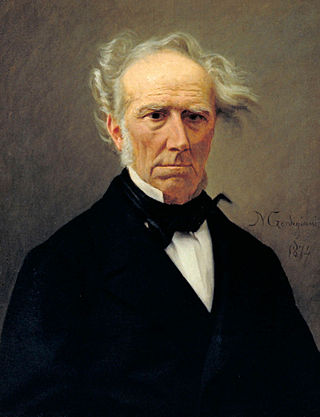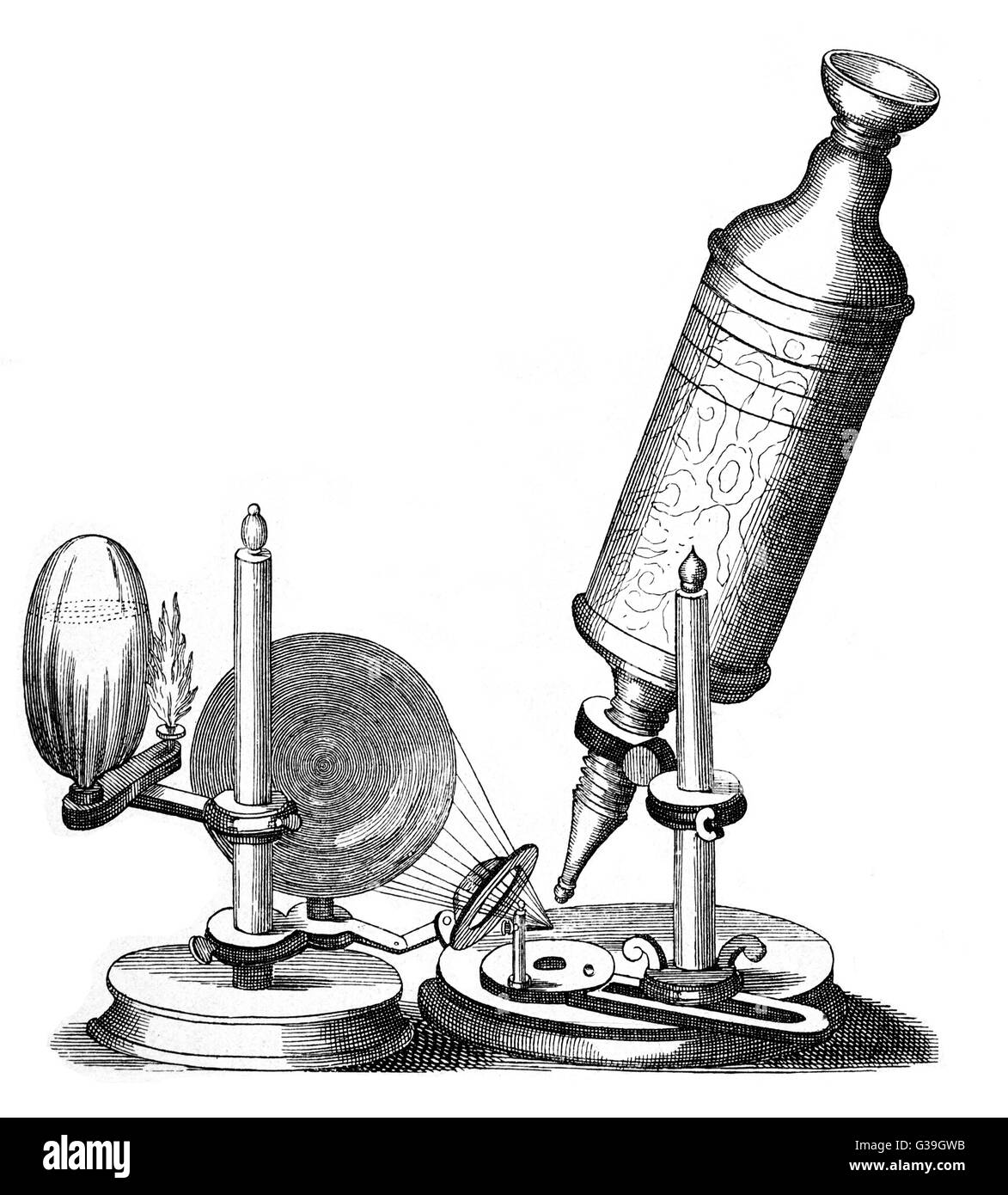The Life and Contributions of Giovanni Battista Amici: A Pioneer in Optics and Microscopy
Early Life and Education
Giovanni Battista Amici, an illustrious Italian scientist and inventor, was born on March 25, 1786, in Modena, a city in the northern region of Italy. From an early age, Amici exhibited a profound curiosity for the natural world, particularly in mathematics and the physical sciences. His formal education began at the University of Modena, where he studied mathematics and natural philosophy under the guidance of esteemed professors who recognized his exceptional analytical mind.
Although engineering was initially his primary focus, Amici gradually shifted his attention toward optics—a field that would define his legacy. His early experiments with lenses and light refraction laid the foundation for his later breakthroughs. By the time he completed his studies, Amici had already developed innovative techniques for grinding and polishing lenses, a skill that would prove invaluable in his future work.
Career and Scientific Innovations
Revolutionizing Microscope Design
One of Amici’s most significant contributions was the refinement of the microscope. At the time, microscopes suffered from chromatic and spherical aberrations—distortions that blurred images and limited scientific observations. Amici sought to overcome these limitations by designing new types of microscope objectives.
In the early 1820s, he introduced the **catadioptric microscope**, which combined both lenses (dioptric) and mirrors (catoptric) to minimize optical aberrations. This innovation dramatically improved image clarity and magnification, allowing scientists to study biological specimens with unprecedented detail. His microscopes soon gained recognition across Europe, earning him a reputation as a leading optician.
Advancements in Telescope Technology
In addition to microscopes, Amici made significant strides in telescope design. He developed high-quality reflecting telescopes with parabolic mirrors, correcting distortions that plagued earlier models. His work caught the attention of astronomers, and he was commissioned to build telescopes for observatories in Italy and beyond.
Perhaps his most notable telescopic achievement was the construction of a large refracting telescope for the Naples Observatory. Equipped with an achromatic lens system, this telescope enabled astronomers to observe celestial bodies with remarkable precision. His lenses were also used in other scientific instruments, including spectroscopes, further expanding their applications in research.
Contributions to Botany and Biology
Beyond his optical instruments, Amici played a crucial role in biological discoveries. His improved microscopes allowed him to study plant fertilization in detail. In 1823, he became the first to observe the **pollen tube**—a critical structure in plant reproduction—providing key insights into how fertilization occurs in flowering plants. His findings were published in prestigious scientific journals, influencing future studies in botany.
Amici’s work extended to the microscopic examination of aquatic organisms, helping to lay the groundwork for modern microbiology. His meticulous observations and precise instruments made it possible to study life at the microscopic level, bridging the gap between optics and biology.
Academic and Professional Recognition
Amici’s groundbreaking work did not go unnoticed. In 1831, he was appointed director of the **Astronomical Observatory of Florence**, a position that allowed him to further his research while mentoring young scientists. He also became a professor at the prestigious La Specola, where he taught optics and instrumentation.
Throughout his career, Amici corresponded with leading scientists of his time, including George Bidell Airy, Friedrich Wilhelm Bessel, and Joseph von Fraunhofer. His collaborations and publications reinforced his status as a key figure in 19th-century science. Recognized by numerous academies, he was elected to the **Royal Society of London** and the **Académie des Sciences in Paris**, among other illustrious institutions.
Legacy and Influence
Giovanni Battista Amici passed away on April 10, 1863, but his contributions endure in both optics and biology. Many of his microscopes and telescopes are preserved in museums, serving as a testament to his ingenuity. His innovations paved the way for modern microscope and telescope designs, influencing generations of scientists.
Today, his name remains associated with the **Amici prism**, a type of reflecting prism used in spectroscopy and optical instruments. Laboratories worldwide continue to use microscopes built upon his principles, underscoring the lasting impact of his work.
Amici’s story is one of relentless curiosity and precision—qualities that define the scientific spirit. His ability to merge theoretical knowledge with practical engineering set a precedent for interdisciplinary research, proving that the pursuit of knowledge often thrives at the intersection of multiple fields.
Continuing the Journey
While this section has explored Amici’s early life, major inventions, and professional achievements, there is even more to his fascinating legacy. In the next part of this article, we will delve deeper into his collaborations, lesser-known inventions, and the broader scientific landscape of his era.
Scientific Collaborations and Academic Influence
Partnerships with Leading Scientists
Giovanni Battista Amici’s reputation as a master optician and microscopist attracted the attention of Europe’s most prominent scientists. Among his closest collaborators was **Joseph von Fraunhofer**, the German physicist famed for his work on diffraction and spectroscopy. The two exchanged ideas on lens manufacturing techniques, with Fraunhofer admiring Amici’s precision in grinding achromatic lenses—a crucial component in reducing optical aberrations.
Another notable contemporary was **George Bidell Airy**, the British Astronomer Royal. Airy relied on Amici’s telescopes for celestial observations, particularly in studying planetary motion. Their correspondence revealed a mutual respect, with Airy often praising Amici’s instruments for their superior clarity. Similarly, **Friedrich Wilhelm Bessel**, the mathematician and astronomer, consulted Amici on methods to improve positional astronomy, further solidifying Amici’s role in 19th-century scientific progress.
The Florence Observatory and Mentorship
Amici’s tenure as director of the **Astronomical Observatory of Florence** (1831–1859) marked another major chapter in his career. Under his leadership, the observatory became a hub for optical innovation. One of his proteges, **Giovanni Donati**, later gained fame for discovering comets and advancing spectroscopy. Donati credited Amici’s mentorship for shaping his approach to instrumentation.
Beyond astronomy, Amici’s microscopes attracted biologists who sought his expertise. The botanist **Filippo Parlatore**, for instance, used Amici’s microscopes to study plant anatomy, leading to discoveries in cellular structures. This cross-disciplinary influence highlights how Amici’s instruments became indispensable tools in diverse branches of science.
Lesser-Known Inventions and Innovations
The Amici Prism
While Amici is best remembered for his microscopes and telescopes, one of his enduring inventions is the **Amici prism**, a specialized reflecting prism used in spectroscopy. Unlike conventional prisms, the Amici prism combined reflection and refraction in a way that minimized light dispersion, making it invaluable for precise spectral analysis. Modern spectrometry labs still use variations of this prism, a testament to its ingenious design.
Early Photography and Optical Instruments
Before photography became mainstream, Amici experimented with early **daguerreotypes**—an initial photographic process. Recognizing the potential of combining optics with chemistry, he adapted his microscopes to capture magnified images of specimens. Though he did not develop a standalone photographic method, his work bridged optics and imaging techniques, influencing later advancements in microphotography.
Another lesser-known contribution was his **water-immersion lens**. By placing a drop of water between the microscope specimen and the objective lens, he reduced light refraction artifacts, improving resolution. This principle later evolved into oil-immersion lenses, still used in high-powered microscopy.
The Scientific Landscape of 19th-Century Europe
Rivalries and Competitions
Amici’s era was marked by both collaboration and rivalry among scientists. One notable competitor was **Karl Zeiss**, founder of the Zeiss optics company. While Zeiss focused on mass-producing microscopes, Amici insisted on custom, handcrafted instruments. Their differing philosophies—industrial scalability versus artisanal precision—highlighted the tensions between craftsmanship and commercialization.
Another rivalry emerged with **Giovanni Plana**, an Italian mathematician and astronomer. Plana criticized some of Amici’s telescope designs as overly complex. Despite this, Amici’s instruments often outperformed Plana’s in observational accuracy, leading to a professional tension that pushed both men to refine their craft.
The Broader Impact of Amici’s Work
Amici’s innovations did not exist in isolation. The mid-19th century was a golden age for microscopy, with pioneers like **Ernst Abbe** later building upon Amici’s lens theories to develop the Abbe sine condition—a breakthrough in optical mathematics. Similarly, Amici’s telescopic improvements coincided with discoveries in planetary astronomy, such as Neptune’s detection in 1846.
Beyond astronomy, his microscope designs fueled revolutions in biology and medicine. When **Rudolf Virchow**, the father of modern pathology, began investigating cellular disease, he relied on microscopes influenced by Amici’s work. This ripple effect underscores how instrumental advancements in one field can catalyze progress in seemingly unrelated disciplines.
Challenges and Criticisms
Skepticism and Technical Barriers
Despite his successes, Amici faced skepticism from traditionalists who doubted the reliability of his microscopes. Some biologists questioned whether his high-magnification lenses produced artifacts—false structures—rather than genuine specimens. Amici addressed these concerns through rigorous demonstrations, proving that his instruments revealed real biological details.
Another challenge was the labor-intensive nature of his craft. Each lens required painstaking manual grinding, limiting production volume. While industrialists like Zeiss embraced mechanization, Amici clung to his meticulous methods, arguing that mass production would sacrifice quality.
Personal Life and Intellectual Pursuits
A Scholar Beyond Optics
Outside the laboratory, Amici was a Renaissance man. He spoke multiple languages, including Latin, French, and German, which facilitated his international correspondence. He also studied classics and philosophy, believing that a broad intellectual foundation enriched his scientific rigor.
His personal notes reveal a deep appreciation for art, particularly Renaissance painting. He often compared lens craftsmanship to the precision of master painters, drawing parallels between optical clarity and artistic realism.
The Next Chapter in Amici’s Legacy
This section has explored Amici’s collaborations, lesser-known inventions, and the scientific rivalries that shaped his career. Yet his influence extended even further—into educational reforms, philosophical debates, and posthumous recognitions. The final part of this article will examine Amici’s later years, his enduring impact on modern science, and the honors that preserve his memory today.
The Later Years and Enduring Legacy
Final Scientific Contributions
In the last two decades of his life, Giovanni Battista Amici continued pushing the boundaries of optical science. One of his most ambitious late-career projects was the design of a solar microscope, which used sunlight to illuminate specimens with extraordinary brightness. This innovation proved particularly valuable for educational demonstrations, allowing entire classrooms to observe microscopic phenomena simultaneously.
Amici also turned his attention to refining immersion microscopy techniques. His experiments with different liquids between the specimen and the objective lens led to significant improvements in resolution. While oil immersion became standard afterward, Amici's water immersion method remained important for studying live specimens that couldn't withstand oil.
Educational Reforms and Public Engagement
Appalled by the poor state of scientific education in Italy, Amici dedicated considerable effort to reforming teaching methods. He advocated for:
- Hands-on laboratory experience for students
- The use of high-quality demonstration microscopes in classrooms
- Integration of theoretical optics with practical engineering
His popular public lectures in Florence drew large audiences, combining spectacular microscope demonstrations with clear explanations. Many attendees later credited these events with inspiring their scientific careers.
Philosophical Views on Science and Technology
The Artisan-Scientist Ideal
Amici embodied a vanishing ideal - the scientist as master craftsman. In an era increasingly dominated by industrial production, he insisted that true optical perfection required:
- Personal fabrication of every component
- Meticulous hand-finishing of lenses
- End-to-end supervision of the entire manufacturing process
His notebooks reveal constant tension between this artisan philosophy and the growing demand for mass-produced instruments. While recognizing the need for broader access to scientific tools, he worried that commercialization would sacrifice quality for quantity.
The Nature of Scientific Discovery
Amici's philosophical writings emphasized the interdependence of instrument design and theoretical advancement. He famously stated:
"The microscope is not merely a tool for seeing, but an extension of reason itself. Each improvement in optics opens new worlds for the mind to comprehend."
This perspective anticipated modern views about how technological innovation drives scientific revolutions. His work supported the emerging idea that scientific progress depended as much on instrumentation as on theoretical insight.
Posthumous Recognition and Honors
Scientific Tributes
Following his death in 1863, Amici received numerous posthumous honors:
- The Amici crater on the Moon was named in his honor
- The Museo Galileo in Florence established a permanent exhibit of his instruments
- The Italian Physical Society created the Amici Medal for excellence in optics
Perhaps most significantly, the optical principles he established became foundational for later developers. Ernst Abbe's revolutionary work at Zeiss built directly upon Amici's discoveries about lens aberrations.
Surviving Instruments and Collections
Today, approximately 150 Amici instruments survive in museums and private collections worldwide. These include:
| Type | Notable Specimens | Current Location |
|---|---|---|
| Microscopes | Catadioptric model (1827) | Museo Galileo, Florence |
| Telescopes | Refractor telescope (1840) | Rome Observatory |
| Prisms | Original Amici prisms | Institute and Museum of Science History, München |
Amici's Impact on Modern Science
Optical Science Today
Many contemporary technologies trace their lineage to Amici's innovations:
- Confocal Microscopy builds on his immersion techniques
- Endoscopic Optics incorporate his prism designs
- Space Telescopes use mirror-lens systems he pioneered
The basic design of modern microscope objectives still follows principles Amici established regarding lens curvature and aperture ratios.
Interdisciplinary Influence
Remarkably, Amici's work continues to inspire fields far removed from optics:
- Nanotechnology - Researchers use Amici-type microscopy to study nanostructures
- Biomedical Engineering - His prism designs aid laser surgery techniques
- Art Conservation - Conservators employ his microscopic methods to examine pigments and varnishes
The Measure of a Scientific Life
Giovanni Battista Amici's career spanned one of history's most transformative periods for science. From his first lens-grinding experiments to his final solar microscope, he exemplified the empirical rigor that defined 19th century discovery. Yet his true genius lay in bridging disciplines:
- He connected optics with astronomy through telescope design
- Brought physics to biology via advanced microscopy
- United craftsmanship with scientific instrumentation
While commercial manufacturers eventually surpassed his production methods, none matched his uncompromising standard for optical perfection. Today, as scientists peer deeper into cells and farther into space, they still follow paths Amici first illuminated through the precise curvature of his remarkable lenses.
His most enduring legacy may be demonstrating how much of science's progress depends not just on ideas, but on the tools that make those ideas visible. In this regard, Amici didn't merely build microscopes - he built new ways of seeing the world.












Comments